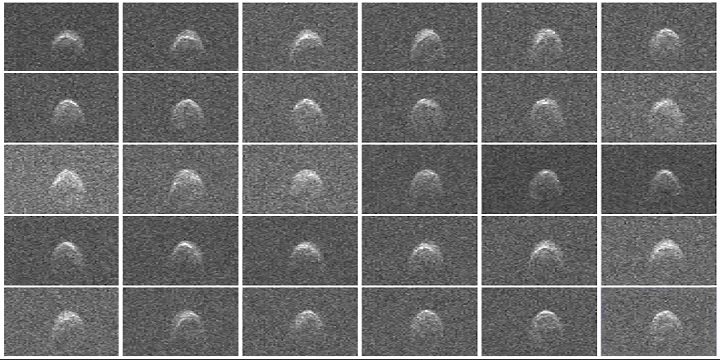A collage of radar images of near-Earth asteroid 2005 WK4 was generated by NASA scientists using the 230-foot (70-meter) Deep Space Network antenna at Goldstone, Calif., on Aug. 8, 2013.
The asteroid is between 660 and 980 feet (200 and 300 meters) in diameter; it has a rounded and slightly asymmetric shape. As it rotates, a number of features are evident that suggest the presence of some flat regions and a bulge near the equator.
The radar observations of 2005 WK4 were led by scientist Lance Benner of NASA’s Jet Propulsion Laboratory, Pasadena, Calif. The data were obtained between 12:40 and 7:10 a.m. PDT (3:40 and 10:10 a.m. EDT). At the time of the observations, the asteroid’s distance was about 1.93 million miles (3.1 million kilometers) from Earth, which is 8.2 lunar distances away. The data were obtained over an interval of 6.5 hours as the asteroid completed about 2.4 rotations. The resolution is 12 feet (3.75 meters) per pixel.
Radar is a powerful technique for studying an asteroid’s size, shape, rotation state, surface features and surface roughness, and for improving the calculation of asteroid orbits. Radar measurements of asteroid distances and velocities often enable computation of asteroid orbits much further into the future than if radar observations weren’t available.
NASA places a high priority on tracking asteroids and protecting our home planet from them. In fact, the United States has the most robust and productive survey and detection program for discovering near-Earth objects. To date, U.S. assets have discovered more than 98 percent of the known near-Earth Objects.
